Advanced Plating Solutions Our Services
Proven Mass Production
Precision Plating for Powdered Materials
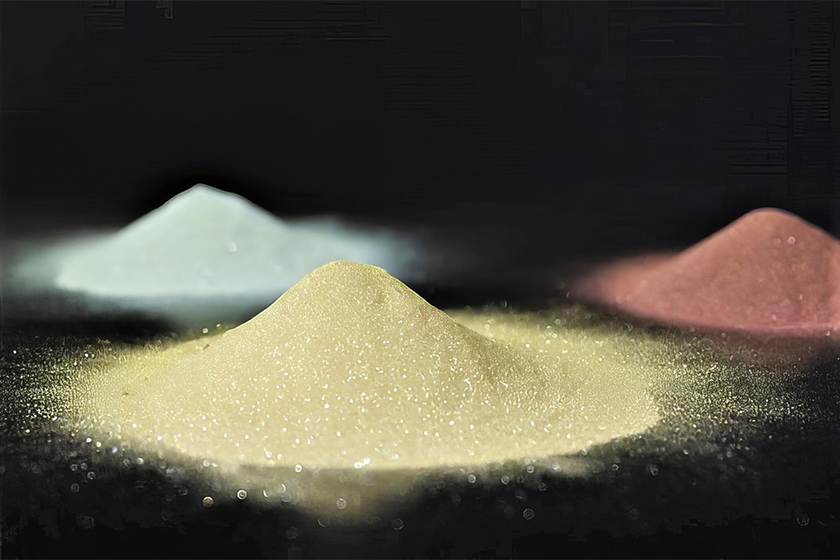
We can apply a nano-scale-thick plating to each individual particle of micron-sized powders, which are smaller than pollen and invisible to the naked eye.
| Electroless Gold | Improves powder conductivity, reduces precious metal costs. |
|---|---|
| Electroless Silver | Improves powder conductivity, provides electromagnetic shielding. |
| Electroless Palladium | Improves powder corrosion resistance. |
| Electroless nickel/palladium/gold | heat resistance, thermal diffusion suppression, and wire bonding |
|---|---|
| Electroless copper (thick plating) | copper wire bonding, copper sinter bonding, low resistance, high current, and heat dissipation applications |
| Electroless low-phosphorus nickel/gold | high-temperature resistant nickel coating |
| Electroless nickel/gold (thick plating) | solder bonding and corrosion resistance |
* Please feel free to contact us about specifications not listed above.
Powder plating is a technology for plating microscopic particles. We can plate powders with particles as small as one micron (1 µm = 1/1000th of a millimeter)—smaller than a grain of pollen. Applying a coating to each of these individual particles is the essence of "powder plating."
With about 20 years of experience, we have a diverse track record working with numerous combinations of core particle materials and plating films. For more details, please see our track record information below.
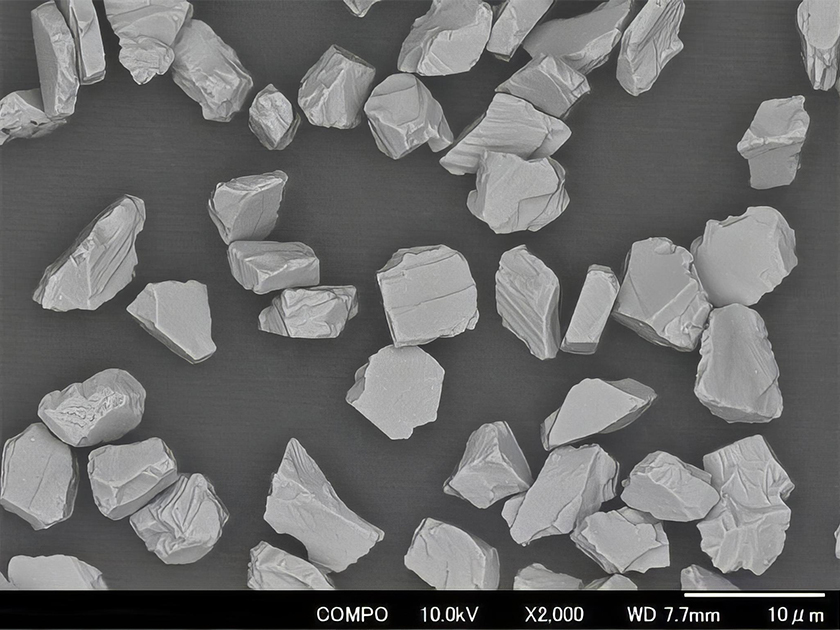
|
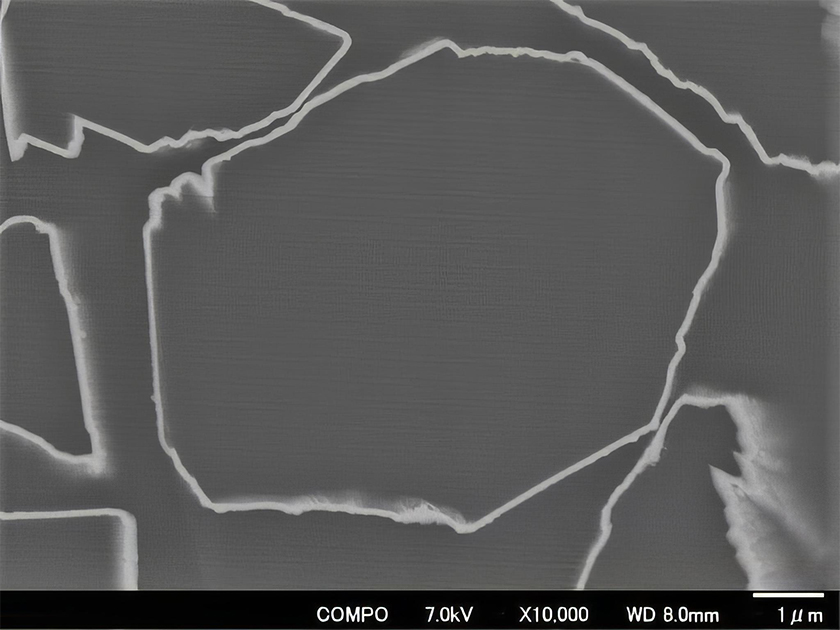
|
We can impart conductivity to non-conductive powders, such as resin or ceramic powders, by plating them. For conductive powders with high resistance, we can further lower the resistance with silver (Ag) plating.
The resistance-pressure graph below shows an example of 20 µm metal particles plated with a 0.1 µm layer. Under a pressure of 50MPa, the Ag-plated particles achieve a resistivity of 1.5×10⁻⁴ Ω·cm. Customizations, such as increasing the film thickness to further reduce resistance, are also possible.
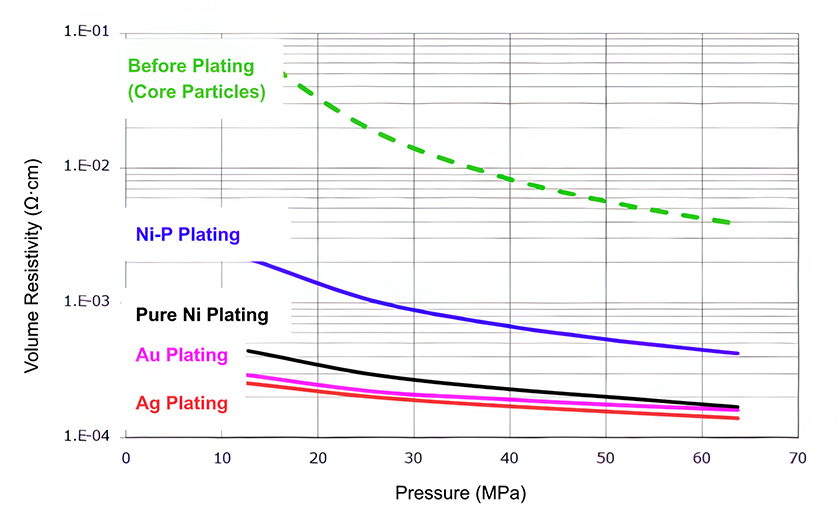
Plating powders can provide them with electromagnetic (EMI) shielding properties. For example, plating with highly conductive copper (Cu) or silver (Ag) reflects radio waves, enhancing EMI shielding. If the core particle is magnetic, it can provide both magnetic and electromagnetic shielding.
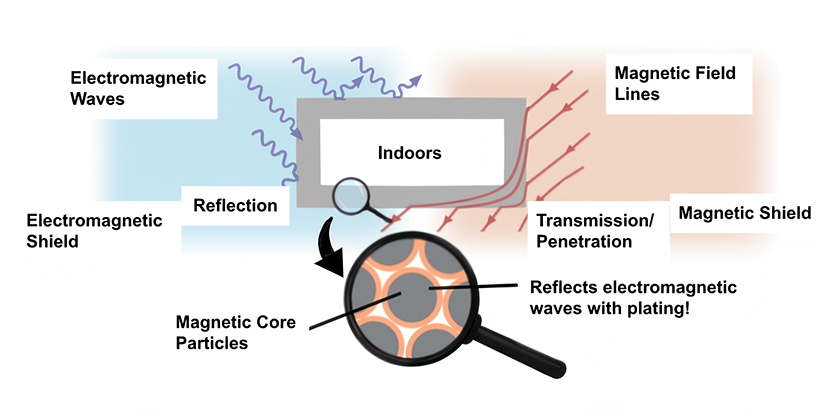
Instead of using expensive precious metal powders, we can plate less expensive core particles with a precious metal. This maintains nearly equivalent performance while reducing the amount of precious metal used, leading to significant cost savings.
For example, if pure gold (Au) powder is used as a filler, plating a cheaper core particle material with Au can reduce Au usage by 90%. Other potential benefits include adding magnetic properties, improving corrosion resistance, and enhancing sinterability.
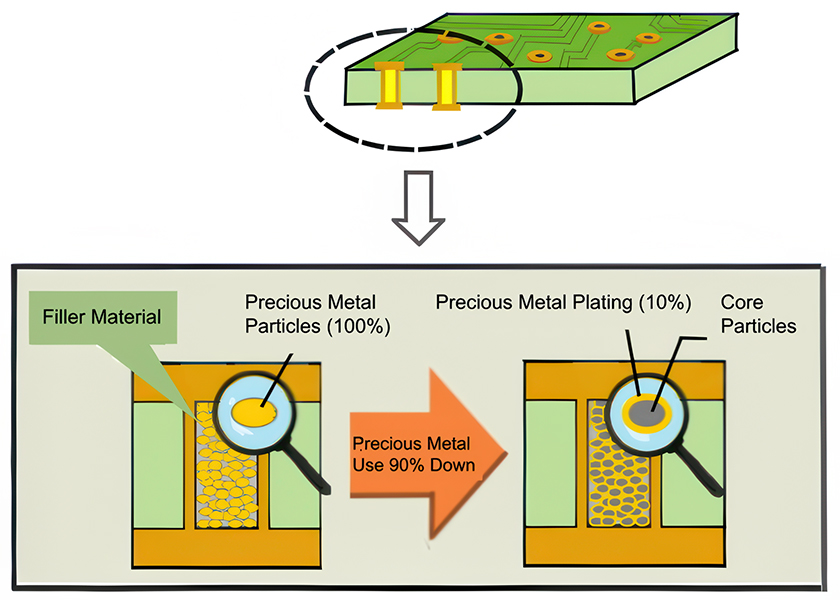
In mass production, we have experience with core particles such as Ni powder, Cu powder, and diamond powder, in quantities ranging from several kilograms to several hundred kilograms per month. Our prototyping experience includes core particle materials like metals, resins, and ceramics, with particle sizes often starting from 3 µm. We also collaborate with clients on trials for special materials and particles smaller than 3 µm.
We have experience with not only spherical core particles but also various other shapes, including single fibers, angular, and irregular forms. Below are some examples.
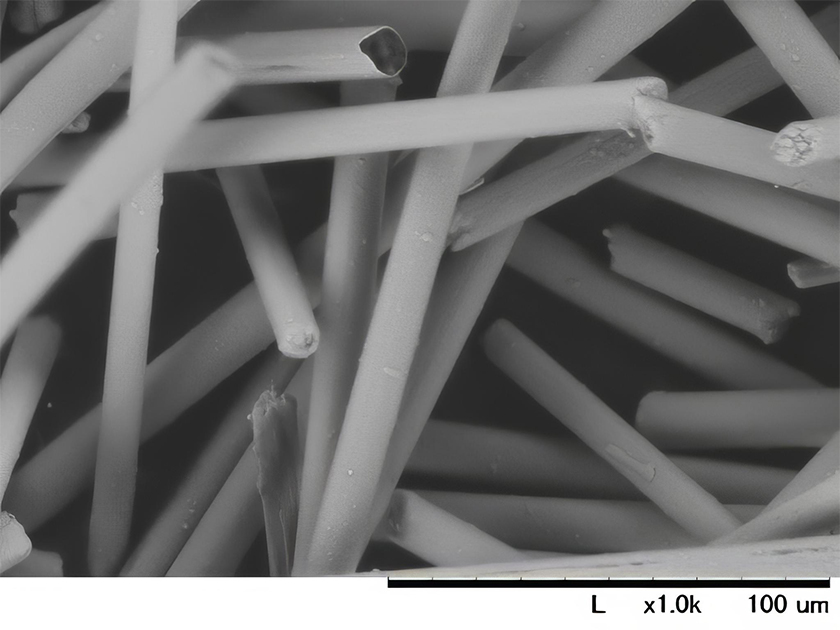
|
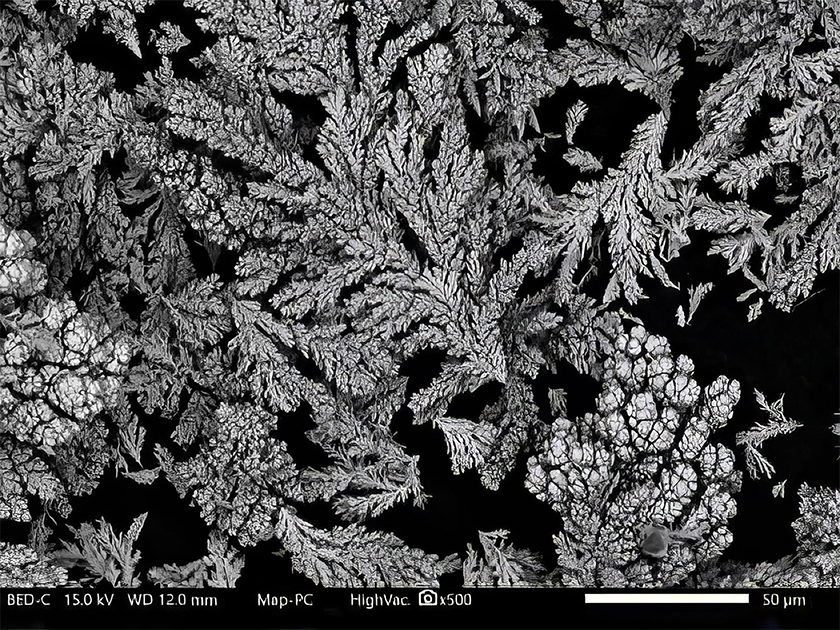
|
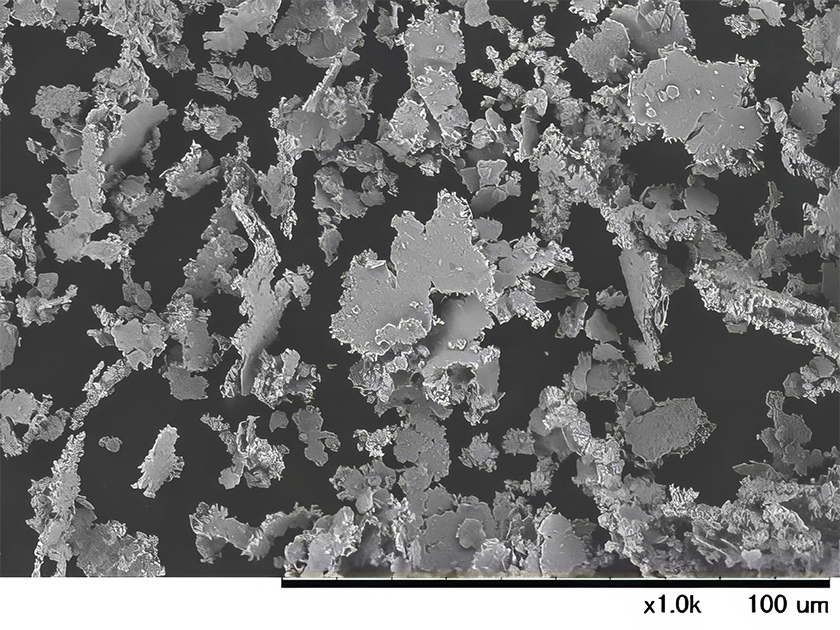
|
While typical plating involves micron-scale film thickness, the extremely large surface area of powders often requires us to apply films on the nanoscale. Depending on the specifications, our "Nano-Plating" technology can achieve nanometer-thick coatings.
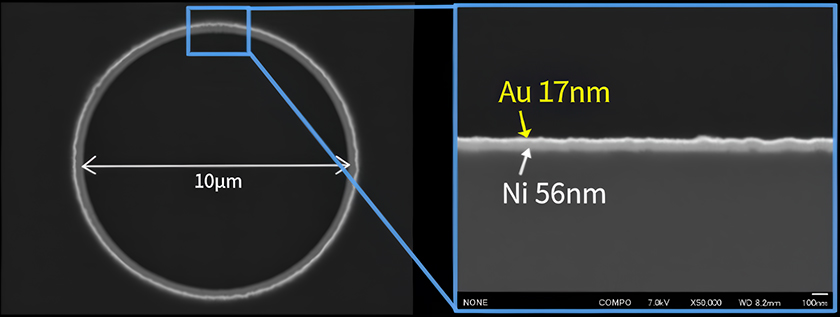
We can control the smoothness and coverage of the plating. A textured coating increases surface area and can provide better adhesion to mating materials. A sparse (or discontinuous) coating can be effective when the properties of the core particle material need to be more prominent. Below are some examples.
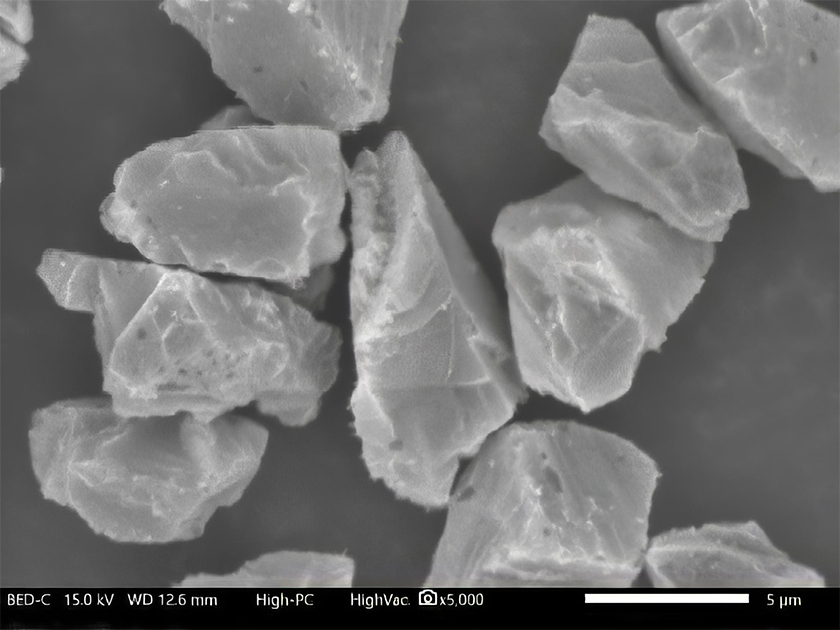
|
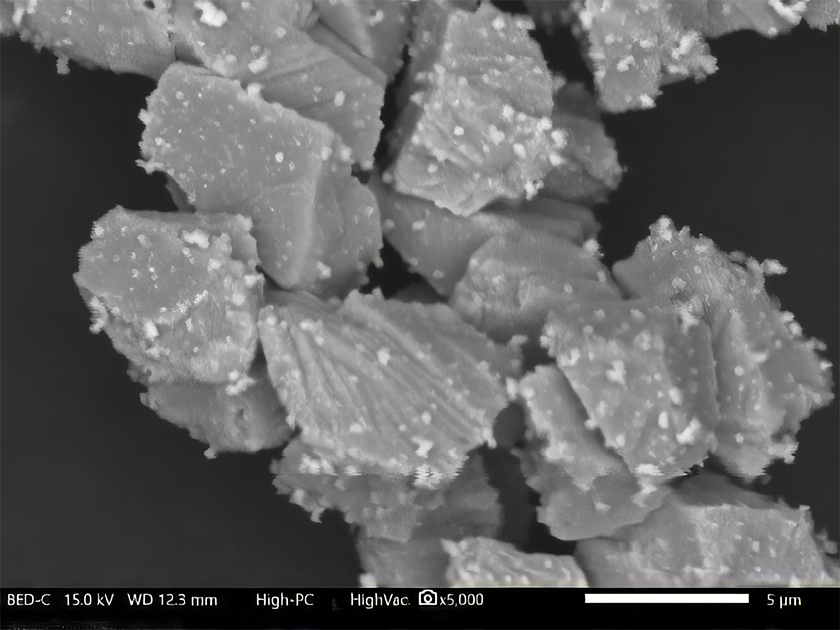
|
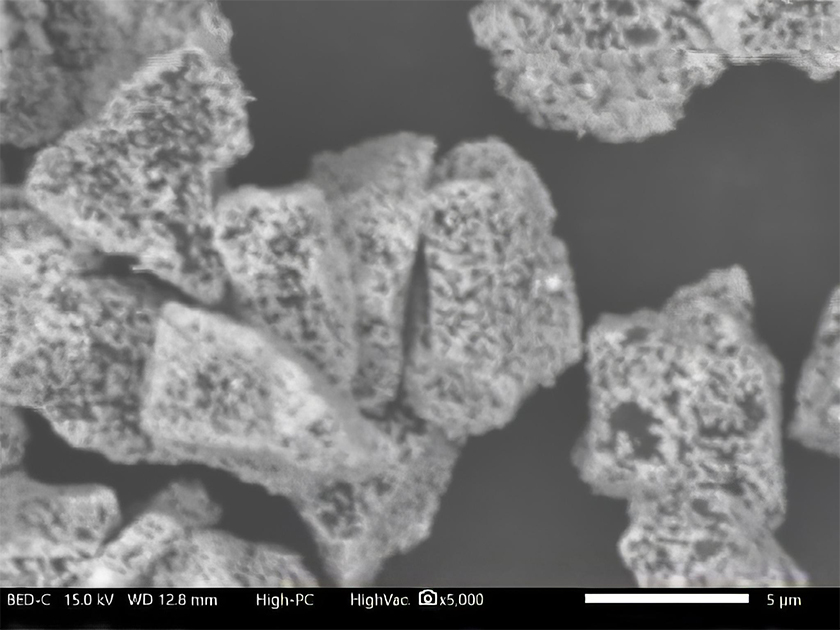
|
We provide thick plating for both conductive and non-conductive powder materials. We have a proven track record of thicknesses up to approximately 60 µm. Our process ensures uniform plating with minimal thickness variation between particles and across particle surfaces.
50 µm to several millimeters (based on prototyping experience).
Ni, Cu, Sn, Au Please contact us for other plating types.
We can handle monthly production volumes from several kilograms to several hundred kilograms.
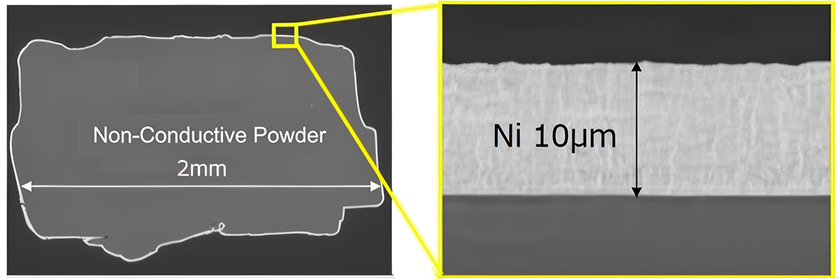
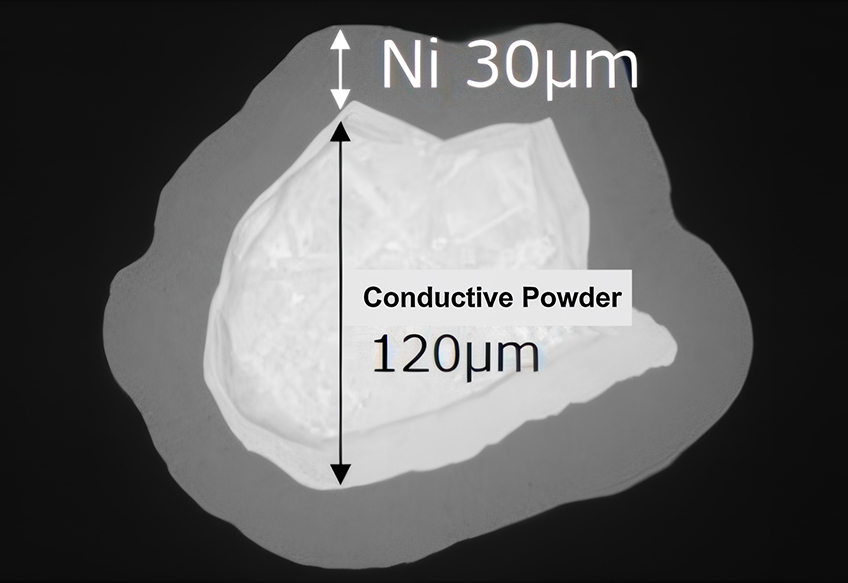
Based on our discussions with you, we conduct an initial trial prototype with the agreed-upon plating specifications. We can start with quantities as small as a few grams.
Based on the initial results, we produce the necessary quantity for you to conduct performance evaluations.
We conduct repeated trials using a batch size that simulates mass production for your final evaluation.
Once the mass production trial results are approved, we transition to full-scale production. We will formalize the specifications and begin manufacturing.
What is the minimum particle size you can plate?
We can plate particles from 3 µm, but trials for particles under 3 µm are also possible. Please feel free to inquire.
Do we need to provide the base powder material?
As a plating services company, we generally ask our customers to provide the base powder.
What kind of evaluation methods do you use after plating?
We perform SEM analysis, particle size distribution measurement, and plating amount verification as standard evaluations. If required, we can also assess properties like electrical resistance and cross-sectional film thickness.